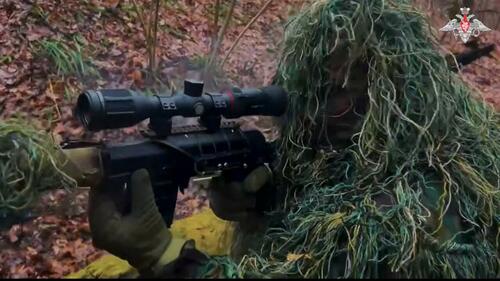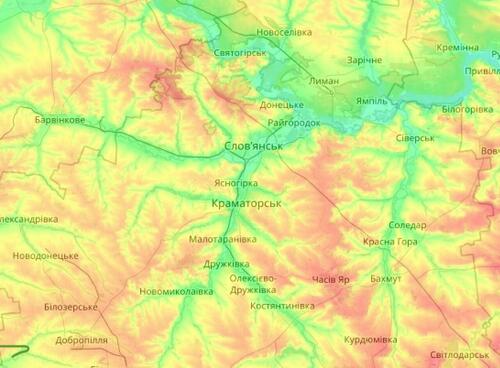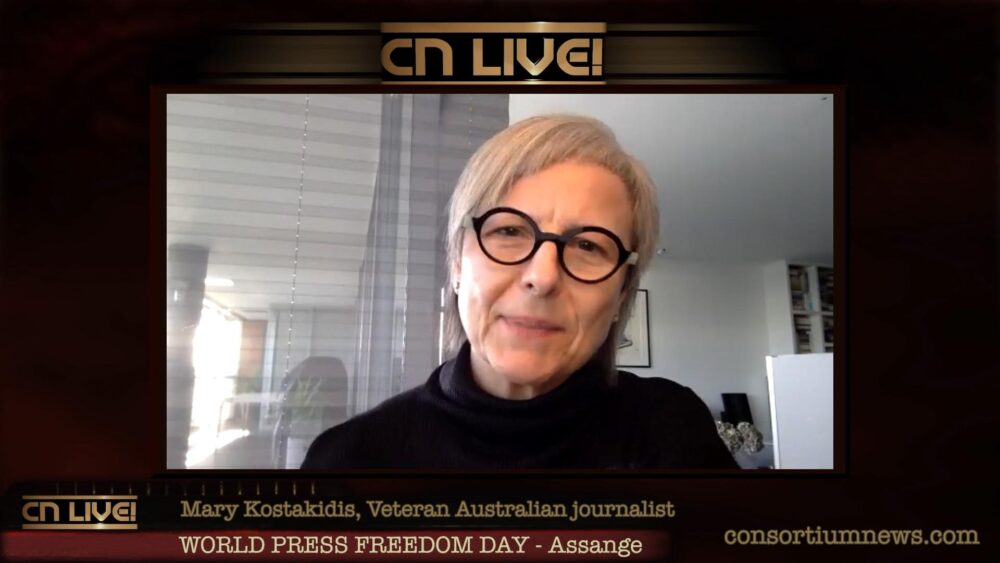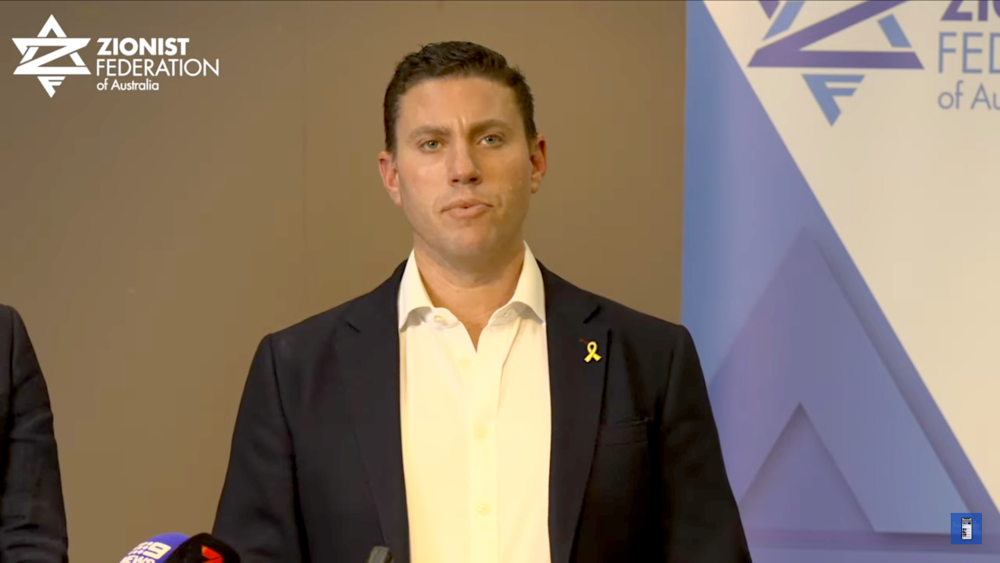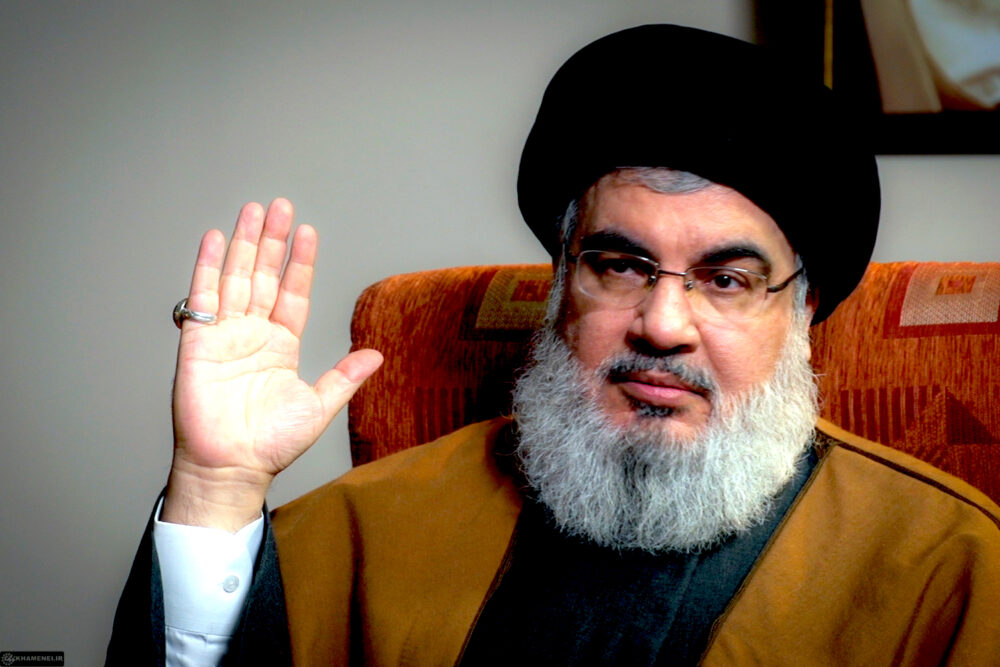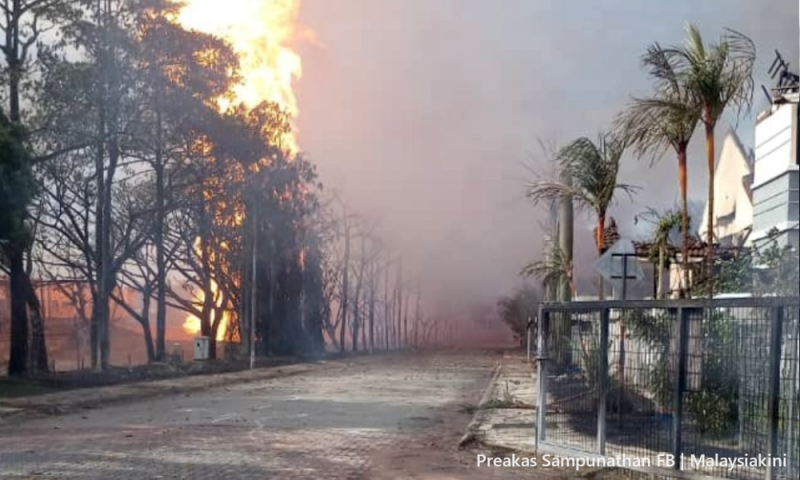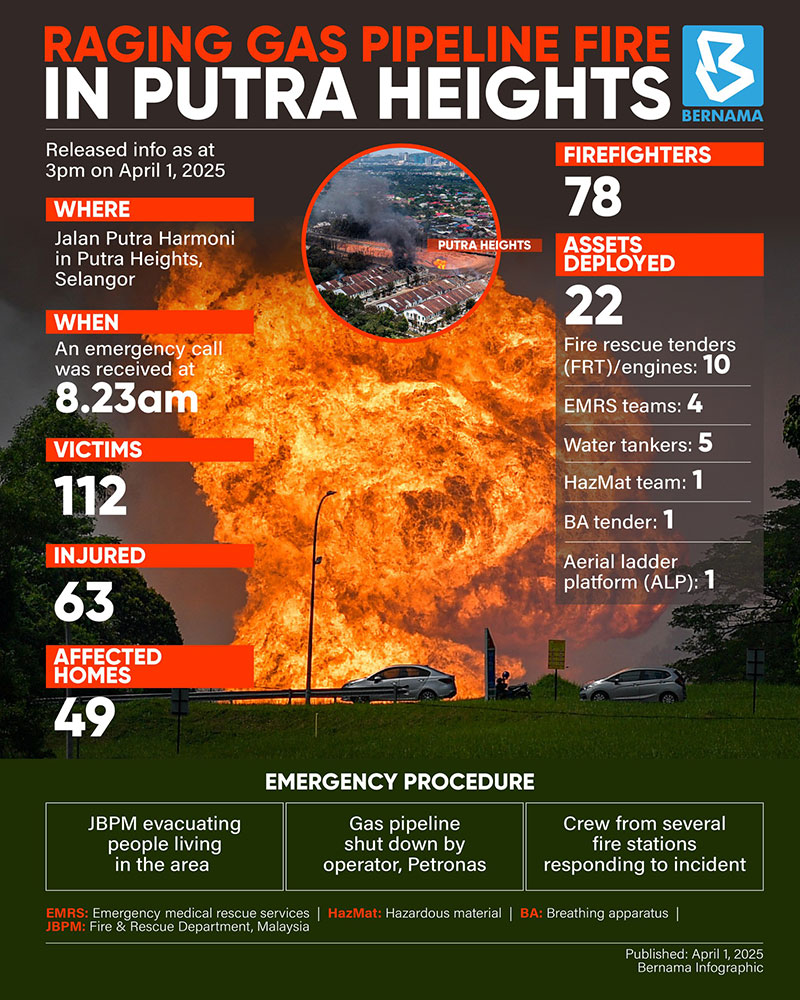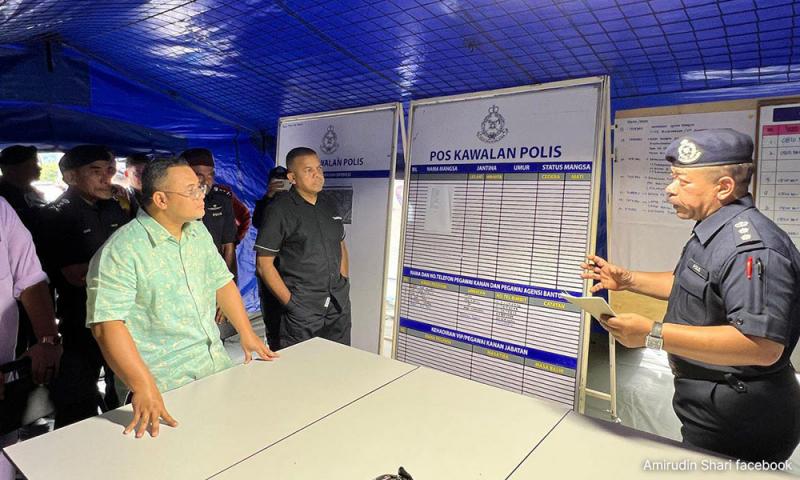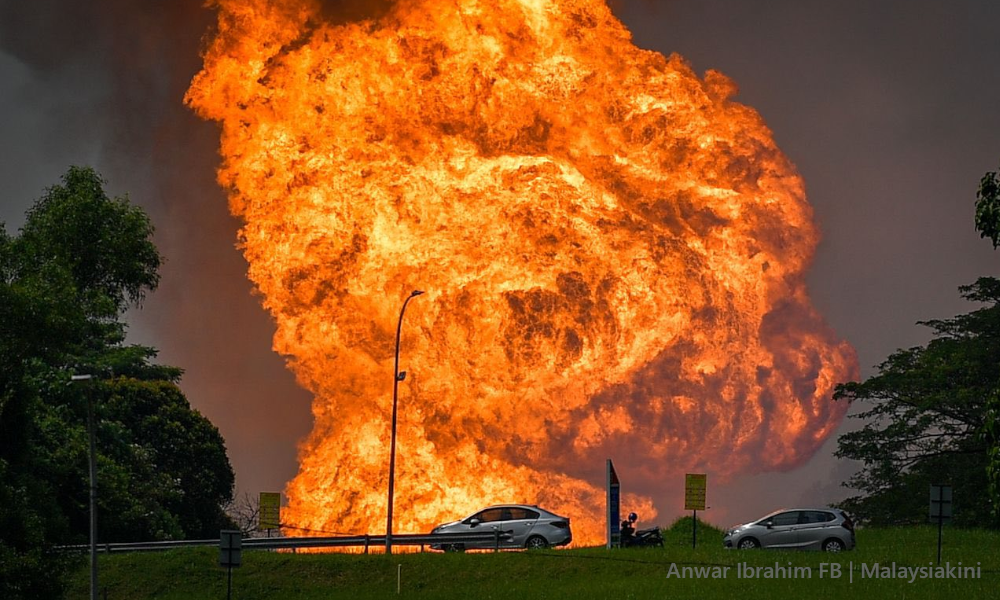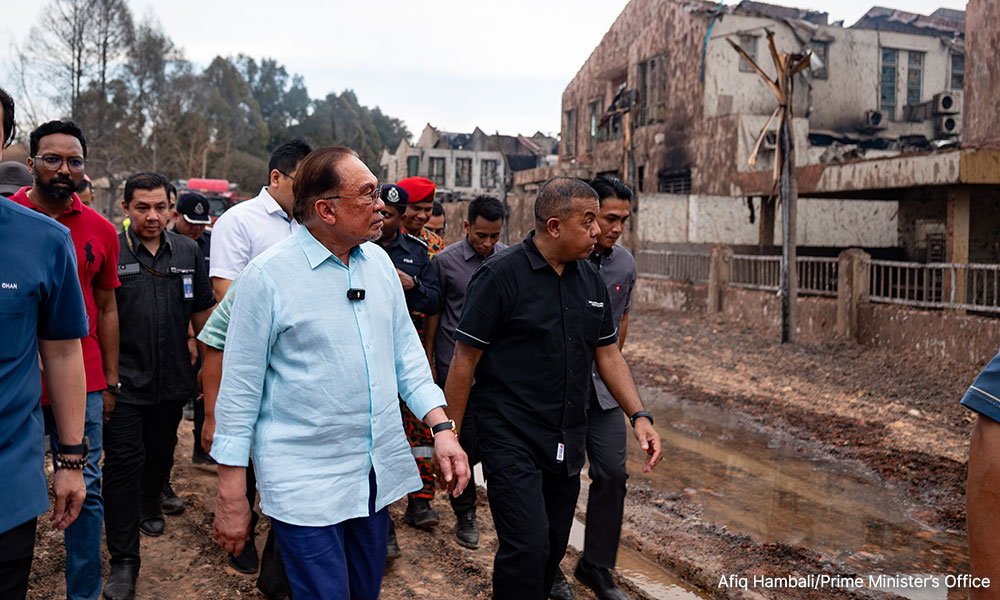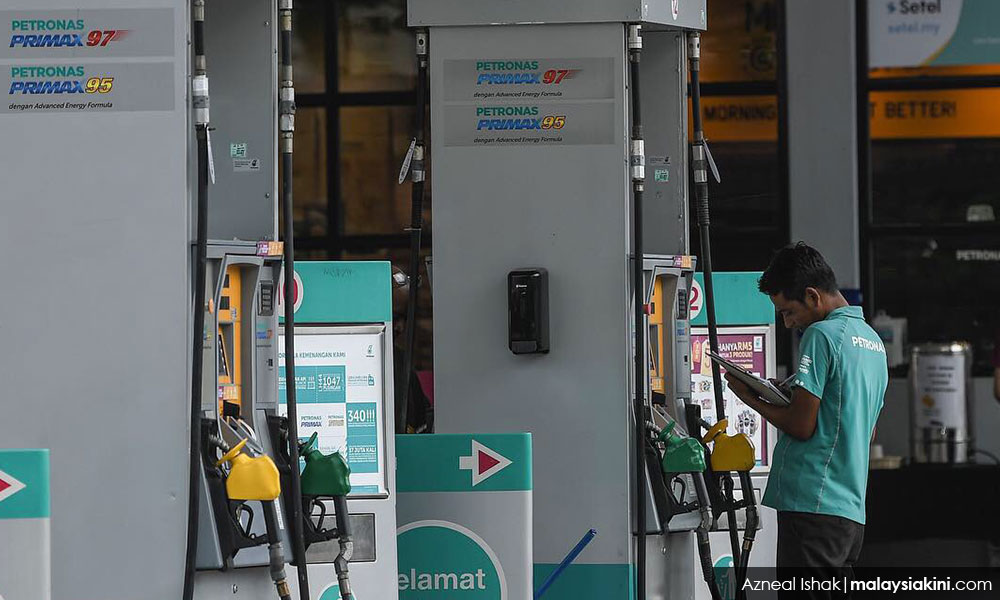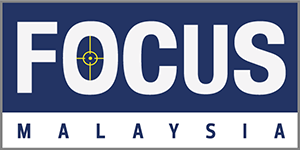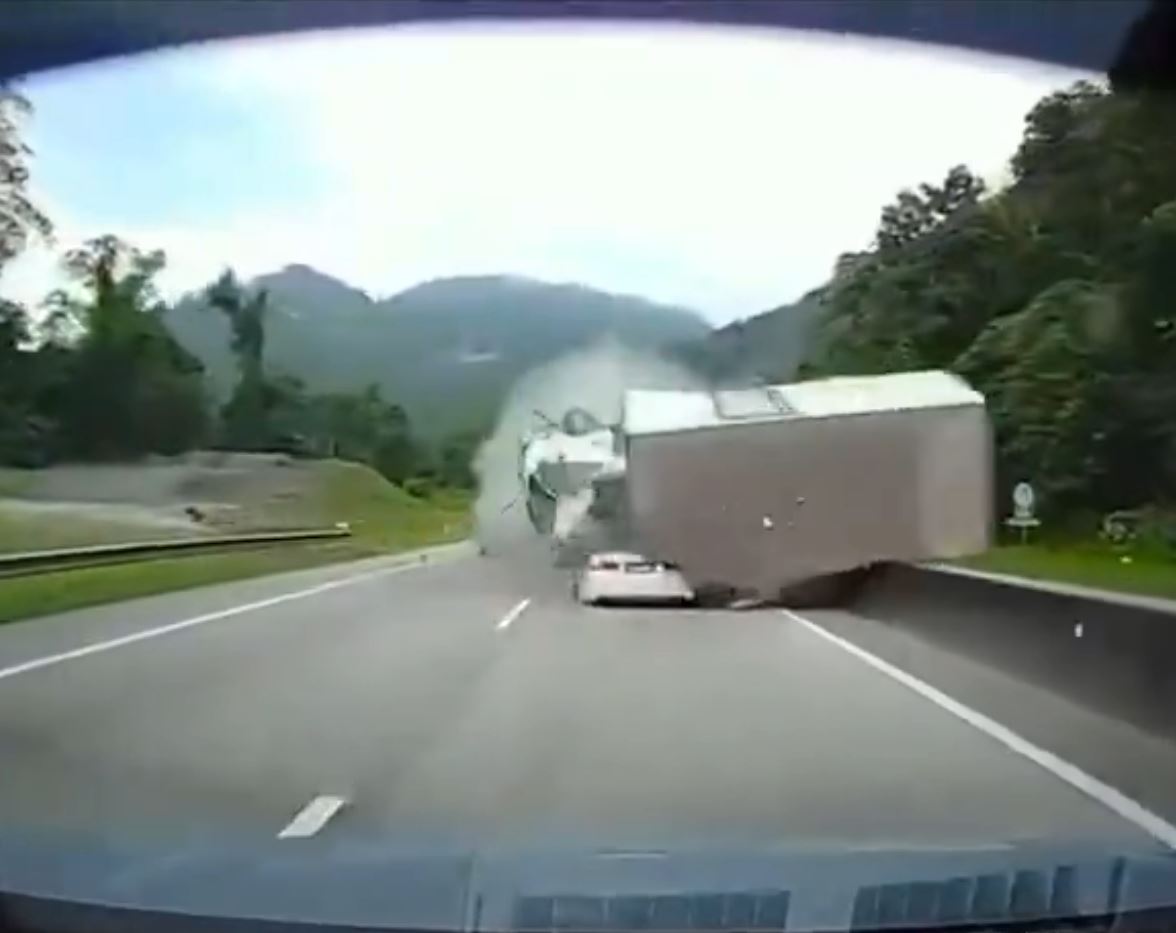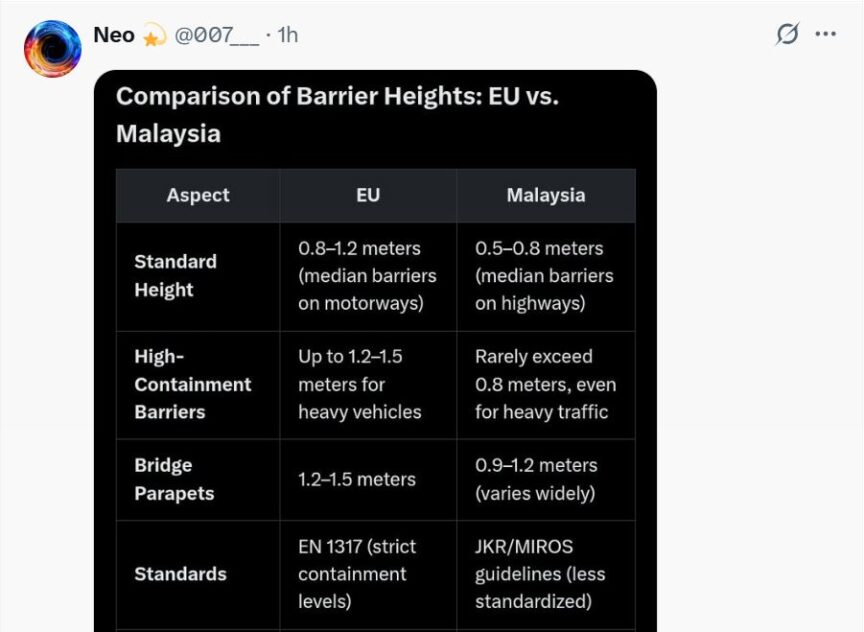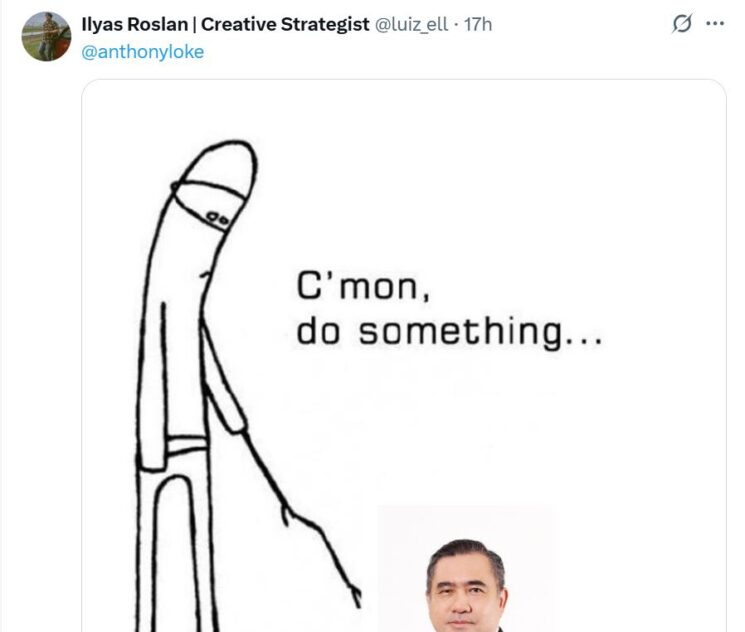
Why Trump Is Unlikely To Negotiate An End To The Ukraine War
by Portfolio Armor
Tuesday, Apr 01, 2025 - 10:18
Trump Expresses Frustration With Putin
Over the weekend, President Trump expressed frustration with President Putin over the lack of progress toward a ceasefire in the Russia-Ukraine War. Speaking to NBC news on Sunday, Trump said,
if Russia and I are unable to make a deal on stopping the bloodshed in Ukraine, and if I think it was Russia’s fault — which it might not be — but if I think it was Russia’s fault, I am going to put secondary tariffs on oil, on all oil coming out of Russia.
As ZeroHedge asked rhetorically in the post we linked to above,
Why should Russia's refusal to make big concessions come as any surprise to either the White House or mainstream media, given Russian forces are clearly steadily gaining on the battlefield?
Our friend Sergei Witte, arguably the most astute and detail-oriented analyst of the Ukraine war, made a similar point in a post he has generously allowed us to excerpt below
Excerpted from Big Serge Thought
Over the weekend, President Trump expressed frustration with President Putin over the lack of progress toward a ceasefire in the Russia-Ukraine War. Speaking to NBC news on Sunday, Trump said,
if Russia and I are unable to make a deal on stopping the bloodshed in Ukraine, and if I think it was Russia’s fault — which it might not be — but if I think it was Russia’s fault, I am going to put secondary tariffs on oil, on all oil coming out of Russia.
As ZeroHedge asked rhetorically in the post we linked to above,
Why should Russia's refusal to make big concessions come as any surprise to either the White House or mainstream media, given Russian forces are clearly steadily gaining on the battlefield?
Our friend Sergei Witte, arguably the most astute and detail-oriented analyst of the Ukraine war, made a similar point in a post he has generously allowed us to excerpt below
Excerpted from Big Serge Thought
Ukraine: Fighting to the Conclusion
Russo-Ukrainian War, Spring 2025
Russo-Ukrainian War, Spring 2025
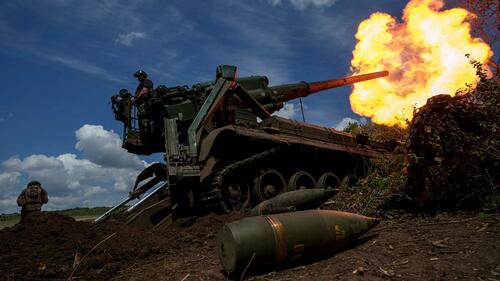
The Russo-Ukrainian War is now three years old, and the third Z-Day, on February 24, 2025, was marked by a substantively different tone than prior iterations. On the battlefield, Russian forces stand significantly closer to victory than they have at any point since the opening weeks of the war. After reversals early in the war as Ukraine took advantage of Russian miscalculations and insufficient force generation, the Russian army surged in 2024, collapsing Ukraine’s front in southern Donetsk and pushing the front forward towards the remaining citadels of the Donbas. [...]
I have never made any bones about my belief that the war in Ukraine will be resolved militarily: that is, it will be fought to its conclusion and end in the defeat of Ukraine in the east, Russian control of vast swathes of the country, and the subordination of a rump Ukraine to Russian interests. Trump’s self conception is greatly tied up in his image as a “dealmaker”, and his view of foreign affairs as fundamentally transactional in nature. As the American president, he has the power to force this framing on Ukraine, but not on Russia. There remain intractable gulfs between Russia’s war aims and what Kiev is willing to discuss, and it is doubtful that Trump will be able to reconcile these differences. Russia, however, does not need to accept a partial victory simply in the name of goodwill and negotiation. Moscow has recourse to a more primal form of power. The sword predates and transcends the pen. Negotiation, as such, must bow to the reality of the battlefield, and no amount of sharp deal making can transcend the more ancient law of blood.
[Portfolio Armor: As an aside, our view is that Putin should have offered Trump deals unrelated to the war, to satiate Trump's desire for dealmaking. For example, given Trump's interest in the Arctic, and Russia's expertise in building nuclear-powered icebreakers, Putin could have offered to build some for the U.S. for an attractive price, in return for sanctions relief. Back to Big Serge now:]
The Great Misadventure: Front Collapse in Kursk
When the history of this war is laid out retrospectively, no shortage of ink will be lavished on Ukraine’s eight month operation in Kursk. From the broader perspective of the wartime narrative, Ukraine’s initial incursion into Russia filled a variety of needs, with the AFU “taking the fight” to Russia and seizing the initiative, albeit on a limited front, after months of continuous Russian advances in the Donbas.
[A long, detailed discussion of how the Ukrainian's Kursk incursion unraveled follows, summarized by the graphic below.]
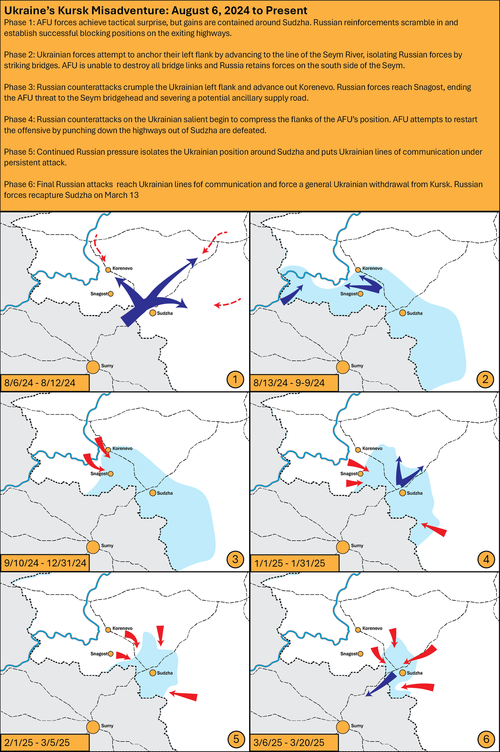
A Brief Tour of the Front
The Kursk salient is the second front to be fully collapsed by the Russian Army in the past three months. The first was the southern Donetsk front, which was completely caved in over the course of December and then rolled up in the opening weeks of the year, which had the effect of not only knocking the AFU out of longstanding strongholds like Ugledar and Kurakhove, but also safeguarding the flank of the Russian advance towards Pokrovsk.
At the moment, there are several axes of Russian progress which we’ll examine in more detail momentarily. More broadly, as Russia scratches off secondary axes like South Donetsk and Kursk, the general trajectory of the front is becoming more focused, as the arrows converge on the Slovyansk-Kramatorsk agglomeration. Eyes on the prize. Russia currently controls roughly 99% of Lugansk Oblast and 70% of Donetsk.
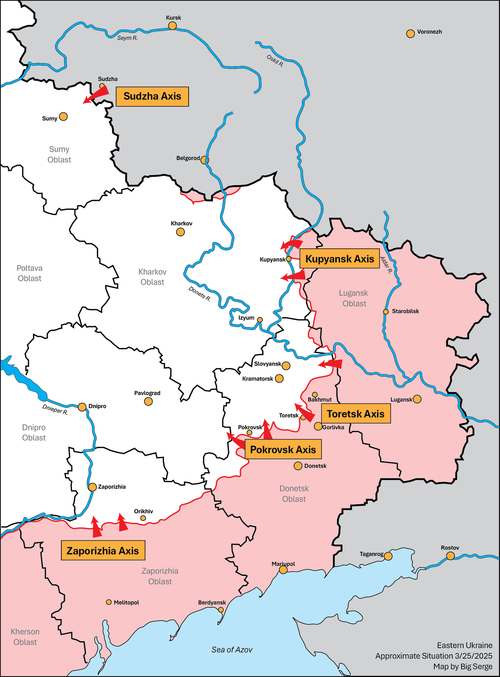
We’ll take a brief tour of these axes of combat. One of the motifs which will immediately stand out is that in multiple critical sectors, Russian forces currently occupy operationally potent positions that give them powerful launchpads for further advances in 2025. In particular, the Russians currently hold multiple bridgeheads across river lines, putting them in position to outflank Ukrainian defensive lines, and they have consolidated control of dominating heights in places like Chasiv Yar.
We can begin at the northernmost end of the line, at Kupyansk. Kupyansk is a modestly sized town (prewar population of perhaps 26,000 people) located at a strategic crossroads on the Oskil River, which is the largest tributary of the Donets. More specifically, Kupyansk is at the intersection of the main east-west highway out of Kharkov and the Oskil highway corridor which runs south to Izym, and it is also the most important transit hub for crossing the Oskil in its northern course. The city was captured early in the war by Russian forces and served as an important plug to prevent the movement of Ukrainian reserves into northern Lugansk Oblast, and was later recaptured during Ukraine’s late-2022 counteroffensive, which saw them push the front away from Kharkov and across the Oskil.
Today, Kupyansk serves as the vital transit hub, base of support, and crossing point that supports a Ukrainian grouping fighting on the east bank of the Oskil. As the battlefield is currently shaped here, however, Russian forces have a tantalizing opportunity to collapse the Ukrainian position altogether. The critical feature here is the consolidation of a sizeable Russian bridgehead north of Kupyansk on the west bank of the Oskil (that is, the Ukrainian side), with Russian forces already positioned on the north-south highway. Although this northern front has been a decidedly de-prioritized theater in recent months, as the Russians scratched off the Kursk and South Donetsk fronts, the placement of Russian forces west of the Oskil creates serious problems for the AFU in Kupyansk.
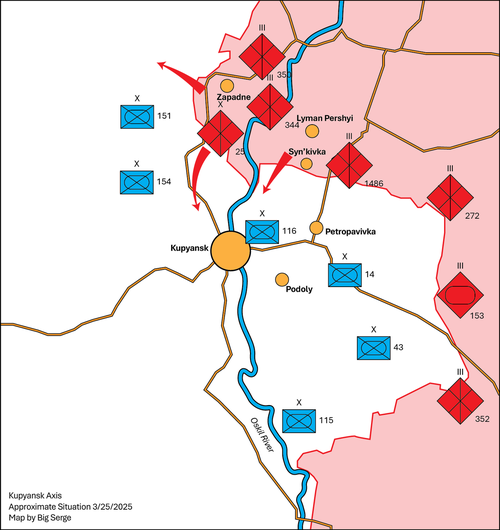
An advance to the south and west out of the Oskil bridgehead would flank Kupyansk and, in combination with advances from the southeast, threaten to collapse Ukraine’s salient across the Oskil altogether. Depending on how much combat power Russia commits to this axis, we could see a similar situation to the one we saw in Kursk, with multiple brigades (currently fighting east of the Oskil) forced to attempt an ad-hoc evacuation across the river as the salient collapses, with their ability to extract heavy equipment potentially compromised by the complication of the river crossing.
Further south on this front, we see a similar situation on the Donets axis. The operational geography here is a bit complicated, so we will indulge in a bit of an elaboration.
The northern Donetsk theater (with its ultimate prize in the Kramatorsk-Slovyansk agglomeration) is dominated by two important terrain features. The first is the fact that the urban corridor (which runs from Kostyantynivka northward to Slovyansk) lies at low elevation along the course of the Kryvyi Torets River - while the river itself is not an important feature, the low elevation of its basin is. This means that the cities themselves are dominated by heights to the east, with Chasiv Yar forming an important hub and stronghold at a commanding elevation.
The second important terrain feature is the Donets River - unlike the diminutive Kryvyi Torets, this is an imposing barrier which bisects the Donbas and forms the northern shield for Slovyansk and Kramatorsk. Russian control of the Donets from the north bank (either at Lyman or, ideally, Izyum further to the west) unlocks the potential to outflank Slovyansk and Kramatorsk from the west and interdict road traffic.
In short, although Kramatorsk and Slovyansk together form an imposing urban agglomeration, their defense is intimately connected with the battle for both the heights to the east and the struggle for control of the Donets. At the current moment, however, Russian forces hold valuable positions which provide a launching pad to unlock this front.
When we zoom in more closely, we see that the Ukrainian defenses around the Donets have benefited from the terrain. On the north bank of the Donets, Russian forces must also contend with an ancillary waterway in the Zherebets River, which flows south towards the Donets and feeds several reservoirs which form formidable defense barriers. The gap between the Zherebets and the Donets is roughly five miles, forming a natural defensive bottleneck, and most of that gap is covered by the town of Tors’ke (now heavily fortified) and a dense plantation forest. For most of the past eighteen months, this section of front has been largely static, with Russian forces failing to make significant headway fighting into this bottleneck.
One way for Russia to undermine this strong defensive position might have been to advance along the south bank of the Donets, reaching the crossing near Yampil and outflanking the Tors’ke line from the southeast. This would have isolated the Ukrainian forces fighting in the forestry plantation and allowed the Russians to advance through the bottleneck. Ultimately, this did not materialize due to the low material priority placed on this front in addition to a very well-managed defense of the Siversk salient by Ukrainian forces. Siversk has been strongly held, and serves as the shield for the Ukrainian right flank.
What is different now, however, is that Russian forces have consolidated a bridgehead over the Zherebets River, which will allow them to outflank Tors’ke and reach Lyman - not from the south, but from the north. Recent weeks have seen the Russians moving into the small villages around the periphery of their bridgehead (names like Kolodyazi and Myrne), creating the space to move additional units over the Zherebets. Much like at Kupyansk, the bridgehead offers the launching point for a sweeping hook into the rear of the Ukrainian defenses.
